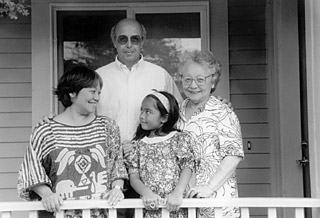The following is a transcript of a keynote presentation that Professor Catherine Waldby delivered at the workshop “Embodiments of Science,” held on November 6, 2009 at Barnard College in New York City. The “Embodiments of Science” workshop brought together scholars of science and science practitioners to critically discuss the history of present scientific approaches to bodies, identities, and destinies including neurological, genetic, and epigenetic interventions.
Listen to a podcast of Professor Waldby’s talk.
I’ve been working on the question of tissue economies for more than ten years now, coming at it in different ways. When I say “tissue economies” I mean the question of how the exchange, circulation, and recalibration of biological materials—which have their origins in human, animal, and plant bodies—but I focus mainly on human bodies. How do human bodies constitute various types of social relationships? How do they create different kinds of value? How do they link populations to each other, or indeed, repel them from each other? Tissue economies have been central to the 20th century concept of the nation state and to the concept of citizenship. We only need to think about the discourse of blood banking, particularly in Western Europe, where the giving of blood is the primary act of citizenship. The gift to the other, the gift to the unknown fellow citizen.
One of the things I will be looking at today is how, increasingly, tissue economies circulate between populations and across national boundaries, creating relationships between the more and the less privileged—the north and the south.
I will also be looking at the ways in which tissue economies suture populations into broader forms of economic productivity; how human bodies are mobilized into bioeconomic development, more broadly. How do they contribute to and participate in the creation of bioeconomic value or ‘biovalue’?
Much of what I will be talking about is drawn from a new book I am working on with Melinda Cooper (author of Life as Surplus: Biotechnology in the Neoliberal Era) provisionally titled Clinical Labor: Tissue Donors and Research Subjects in the Bioeconomy. In this book we are exploring the proposition that human medical subjects—those who give tissues to medical research and those who participate in clinical trial research—are increasingly mobilized not through the tradition of citizenship and voluntary participation, but through transactional and formal labor relationships. In some circles this is a fairly startling proposition. However, in the U.S., I find that people tend to get what I’m saying because the business models underpinning these informal transactional relations, in many cases, have their origins in the United States and have been exported around the world. Whereas in Europe, the discourse of voluntarism and citizenship is still more hegemonic, even if it’s not as explanatory as they might think it is.
Since World War II, biomedical researchers relied on the idea of a freely-consenting volunteer who gives to the public good, donating blood or other types of tissue either to a fellow citizen for therapeutic reasons or to medical research. But a number of dynamics within the commercialization of biomedicine have made this a less persuasive form of mobilization. In particular, the expansion of biomedical research has led to a very large scaling up of tissue banking. National biobanks all around the world aim to enroll very large percentages of the national population. The U.K. biobank is aiming for half a million participants. The Icelandic biobank aimed for the entirety of its national population to be enrolled in its biobank, although it didn’t succeed. This scaling up of biomedical research activity, in many cases, has simply reached the limits of the voluntary system. It is very difficult within the voluntary system to mobilize enough experimental subjects to proceed.
There are also many historical precedents to the kind of thing we’re talking about: for example, blood vending and plasma vending, particularly in the United States, as well as the use of prisoners for clinical trials. The strategy here is either to recruit through fee for service, or to turn to an incarcerated population and use institutional leverage.
This type of transactional procurement is expanding rapidly, however it tends to be found as kind of an exception. It is not conceptualized in the regulatory agencies that control and regulate clinical trial work, and it is certainly not conceptualized as labor. Rather, it is thought of as a type of voluntary participation for which the volunteers are compensated, where the language of volunteerism, citizenship, participation, and public good is still very much in place in regulatory and bioethical circles.
Turning to the reproductive aspect of this kind of clinical labor there are two different categories: one is clinical trial experimentation, and the other is reproductive labor. Central to this idea is that since the beginning of the so-called ‘life sciences revolution’ in the 1970s, a great deal of the achievements of biomedical research are actually a disaggregation and a redistribution of reproductive processes generally—genetic processes, cellular replication and tissue cultures, embryogenesis, etc. So if we think about biological reproduction in its many manifestations, much of the biotech revolution is precisely about instrumentalizing biological reproduction and being able to redirect it, recalibrate it, change its direction to be able to do nifty things in vitro and sometimes in vivo.
This disaggregation and redistribution of reproduction has particular and very complex implications for women because women’s bodies necessarily have an asymmetrical capacity for biological reproduction compared to male bodies. So it raises a series of complicated questions about how to understand the biopolitics of the relationship between, particularly, young women when we’re talking about stem-cell research and reproductive labor, and biomedical research and biomedical industries, more generally.
Fertility outsourcing is one such area where these questions come into sharp focus.


